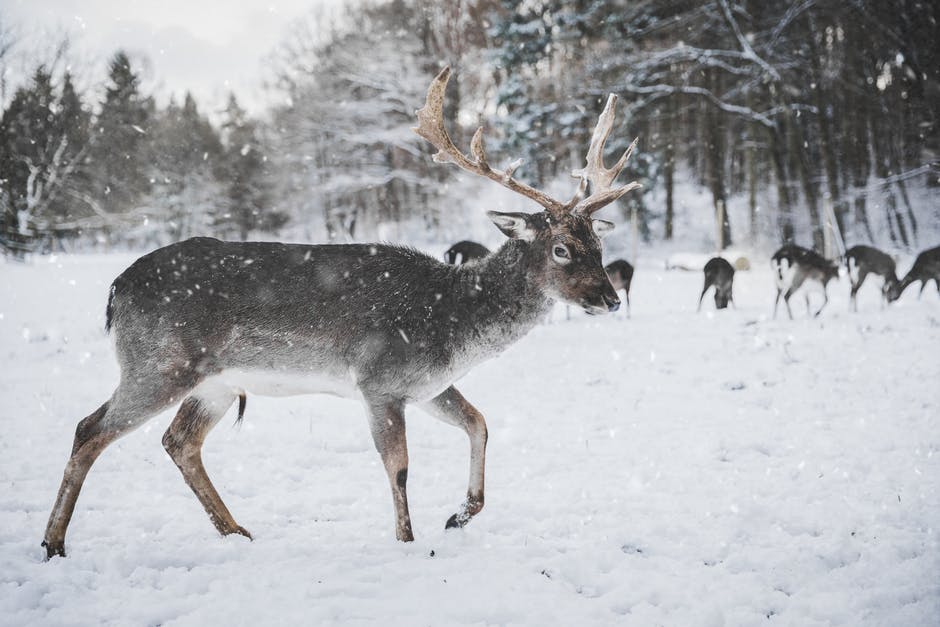Winter wildlife spotting tips

There are many of us that plan trips with wildlife spotting opportunities in mind. Observing animals is usually easier in summer when the mountains are not covered in snow, but there are plenty of places across the country where you can go wildlife spotting even when the weather conditions are not perfect. But what’s interesting is that the animals don’t always have enough food in winter and they are obliged to move around more in search of something to eat. Here are some useful tips that will help you locate and see a lot of animals and birds at various places across the country.
Check for tracks
The snow may not be great for a long walk but it’s a perfect for tracking animals. They leave traces and footprints that you can follow and identify which animal is walking in front of you. Don’t worry, you don’t have to be an expert to see what animal it is that you’re following. Do they have claws, paws, do they hop or run, how many toes? See what you can discover just by observing the tracks in the snow. It’s fun to do, so think about bringing your kids with you.
Look to the water

When the rivers and the lakes freeze animals have to search for water. If you want to see an animal in its natural habitat during the winter then look for a small stream or any flowing water where the thirsty animals gather. Thin-iced sides of lakes are also good locations for wildlife spotting, so no matter where are you going, look for a unfrozen water source and wait for the animals to pass by.
Scat
This one may seem gross to you, but when you spot an animal scat that means that they are likely to be near you. In the summer the scat blends in with the ground surface, so you can’t really see it, while in the winter it is easy to see it in the snow. The bigger the scat, the bigger the animal that left it behind. Be careful where are you going and inform yourself about all the possible animals that you might run into.
What animals can you see?
Deer

When you spot a deer, don’t approach too close because they can be aggressive, especially if you stand between a mother and her young. Observe them from a distance, keep quiet, and don’t try to touch them. It’s an emotional experience to see Bambi in the wild, but don’t forget that it’s a wild animal after all.
Otters

Otters are sensitive animals and disturbing them is not a good idea. If you want to see one you need to be patient, quiet and still. Find a comfortable spot near a lake or a river, sit down and just wait. Keep an eye on bubbles on the water surface or adults hunting in the reeds.
Squirrels

What is there to say about these beautiful tiny animals? They are fast, curious, and cute. Seeing them during winter is easier, especially when they run from one tree to another. Their dark fur shines in the snow, so it’s not a big challenge to see them. Prepare your camera to get some cool squirrel shots.
Bears

Bears are wild and big, therefore, you don’t want to get too close or be spotted by them. If you ever find yourself in a region where there are bears, don’t even think of approaching or communicating with them. Keep a safe distance and make sure they don’t smell you. They are beautiful, majestic, and strong-jaw beasts that can tear you apart in seconds. Treat all animals with respect and don’t spoil their natural habitat.
If you have any comments then please drop us a message on our Outdoor Revival Facebook page
If you have a good story to tell or blog let us know about it on our FB page, we’re also happy for article or review submissions, we’d love to hear from you.
We live in a beautiful world, get out there and enjoy it. Outdoor Revival – Reconnecting us all with the Outdoors.
